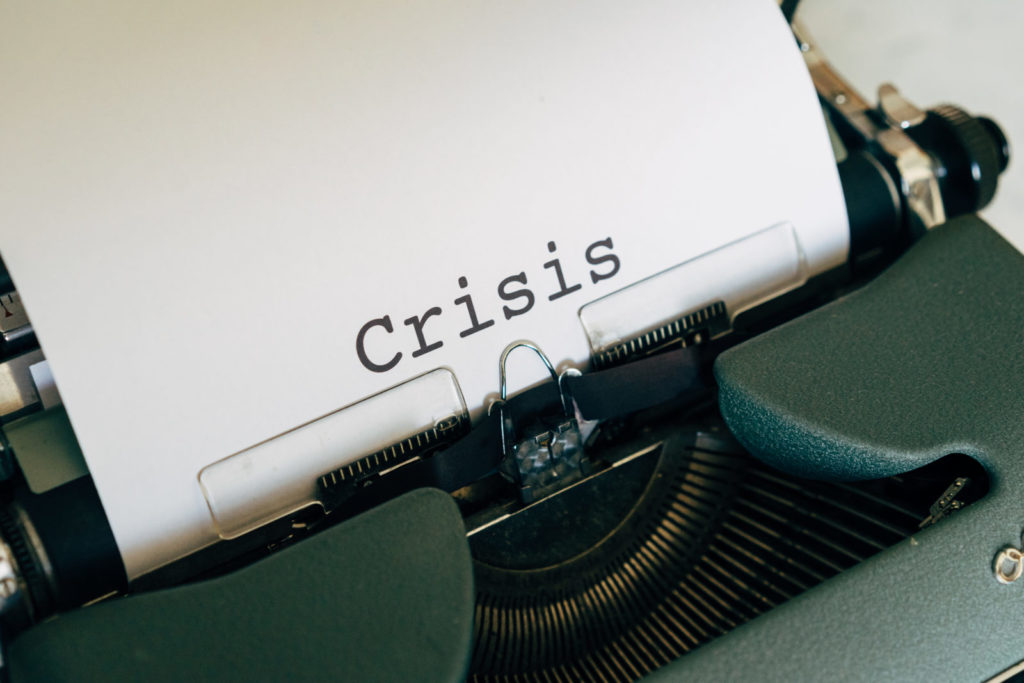*This is a version of an essay written for a Master’s course during fall 2020 session

In this article, I will argue that economic crises are not only inevitable under capitalism but also necessary from the capital’s point of view. Locating the role of crises in the capitalist dynamic is a crucial element in order to avoid misleading interpretations of the nature of capital accumulation. We define a crisis as a severe and sudden downturn in the economic activity within a country or region which sooner or later involves a recovery process and can potentially lead to structural changes. Two examples of crises are the Great Depression (1929-1939) and the Great Recession (2007-2009), although there have been less severe crises throughout modern history.
Some authors have stated that the Great Recession of 2008 must be seen as a systemic crisis of capitalism, in particular of its neoliberal era (Kotz 2009, Lippit 2014, Duménil & Levy 2011). A systemic crisis appears, according to Kotz (2009), when major reforms of the system are required in order to overcome the crisis. The 2008 financial crisis would have been the beginning of the end of neoliberal capitalism. This interpretation relies on the idea that this crisis represents a concrete threat to the possibility of capital accumulation and it implies the entrance of a new historic period in the global economic system. In other words, this recession is an epochal event as the downturn compromises neoliberalism’s continuity. Authors who endorse it predict huge institutional changes, which can be interpreted as a further step in the eradication of the capitalist mode of production. The problem with this interpretation is that it assumes a mechanistic perspective that makes invisible the relevance of the political process in the reshaping of any economic system and plays down the role of crises in the capital dynamic.
To make things clearer, it becomes necessary to make a brief inquiry on the nature of the crisis in capitalism. The main feature that defines the capitalist dynamic is the imposition of the accumulation for accumulation’s sake as a mandated behavior imposed to businessmen competing with each other (Harvey 2018). In order to survive as a capitalist, the entrepreneur must pursuit competitive advantages that can be achieved by enhancing productivity. This productivity race triggered by competition among capitals is the norm, not the exception of capital accumulation. We can see this in the permanent process of technical innovations that allow increasing profits by reducing costs or through price war that enables some firms to increase market share by reducing good’s prices.
The process described above opens the possibility of overaccumulation. The key idea here is that competition amplifies installed capacity, creates an excessive mass of commodities in the market, and produces an increasing gap between supply and demand (Clarke 1990). The desire to obtain more profits makes the economy prone to crises because of overaccumulation. There is too much inventory that cannot be sold, then profit rates decline and investors have to withdraw. Now, projects and investments are no longer carried out, the crisis has just begun. This sequence represents a Marxist reasoning and it points out that any economic recession is, essentially, an overaccumulation crisis.
But this is not how the story ends. The downturn produces an intense struggle among capitalists pushing the weaker ones into bankruptcy. There are many losses in economic terms, the aggregate demand shrinks but here something interesting happens. Capital has to be understood as value in motion, the continuous metamorphoses of value through the M-C-M’1 cycle in which capital is increased (Harvey 2018). The fact that recessions mean the economy is in a sort of suspended animation implies huge amounts of capital (in form of money, machinery, or simply commodities) are idle, the metamorphosis cycle is stopped and value is destroyed in a devaluation process. The same phenomenon occurs in terms of the labor force when stagnated real wages and extension of the reserve army of labor takes place. Devaluation is, in Harvey’s words, the underside of overaccumulation (Harvey 2018: 195).
The whole cycle of overaccumulation and devaluation entails restoring capital accumulation’s conditions. The destruction of capital can be seen as a necessary step in the capitalist dynamic that enables to reinitiate a newer and bigger cycle of accumulation. This is the contradictory nature of capitalism. On the one hand, we can admire the intense development of technology and the total amount of wealth created, and on the other hand, we can feel surprised by the sudden and radical destruction of value during crises. In Marx terms:
“These contradictions, of course, lead to explosions, crises, in which momentary suspension of all labour and annihilation of a great part of the capital violently lead it back to the point where it is enabled [to go on] fully employing its productive powers without committing suicide” (Marx 1973, p. 750)
Crises appear here as a necessary evil, something that in fact serves the capital’s interests. As we can see, crises per se are far from being the end of capitalism.
This conclusion does not sound very logical but it actually is. How can crisis that destroys capital be considered a good thing for the subsistence of the system? Devaluation throws a vast set of assets into the market which means valuable goods can be acquired for almost nothing. Thus, survivors can exploit this opportunity as if they were subsidized by public funds, saving money in the process. Furthermore, a crisis kicks off a redistribution that intensifies wealth concentration. It is not a coincidence that a great number of big companies have appeared in a recession context or have been boosted by this. For instance, Airbnb and Uber were founded around 20082 , and Amazon and Apple became global3 .
The idea that crisis is neither a sufficient condition nor a necessary one to cause the end of capitalism or call into question the neoliberal era is something with important political consequences. This involves that despite the fact that crises are generated endogenously, such an existential crisis cannot be taken for granted. Of course, crises have existed before capitalism, however, one particular characteristic of this economic system is its instability. Capitalism is capable of recreating itself through violent episodes like crashes. If social movements claiming for new institutional settings do not arise, we cannot expect the system to eradicate its propensity to slump.
At some point, the great recession has activated important social movements in the developed world, but these new political expressions have not managed to transform their agenda into concrete and applied policies. Nowadays, at least before Covid, it appears the world economy is dominated by the financial sector (Dünhaupt & Hein 2019), and private agents do business in a still poorly regulated setting. Economic restructuring requires more than a crisis, it needs the active participation of people. Some reforms have been applied but those are based on the idea that crises can be avoided if financial regulation is strengthened. There is an implicit denial of crisis as an inevitable consequence of the capitalist system. To sum up, crises does not put in jeopardy the existence of the capitalist mode of production. On the contrary, the crisis is an essential part of any capitalist economy which ensures a return to minimal conditions to initiate a new accumulation process.
The question of this article is whether crises are inevitable in capitalism. We approach this question by trying to get an understanding of what crisis means in the capital historic accumulation process. From this approach, we find that crises are an essential feature of capitalism as it enables a temporal resolution of its inherent contradictions. Contrary to the view of Kotz (2009), Lippit (2014), and Duménil & Levy (2011), crises have to be considered an episode that restores conditions to initiate a new phase of accumulation. The “final crisis” approach relies on a mechanistic assumption that cannot grasp the complexity of capitalism in the sense that what is considered its ultimate barrier, is in fact something that cleans the path to a wider and broader accumulation. Basically, crises are not only inevitable, they are necessary. How can the last crisis be considered a threat to capitalism when we can note that the increasing inequality trend has not been interrupted (Alvaredo et al. 2018) during and after the great recession?. The economic world, at least until the Covid era, works alternating booms and busts, although it seems booms are less and less strong and busts are more and more dramatic, but this is a subject for another essay.
References
Alvaredo, F., Chancel, L., Piketty, T., Saez, E., & Zucman, G. (Eds.). (2018). World inequality report 2018. Belknap Press.
Clarke, S. (1990). The Marxist theory of overaccumulation and crisis. Science & Society, 54(4), 442-467.
Duménil, G., & Lévy, D. (2011). The crisis of neoliberalism. Harvard University Press.
Dünhaupt, P., & Hein, E. (2019). Financialization, distribution, and macroeconomic regimes before and after the crisis: a post-Keynesian view on Denmark, Estonia, and Latvia. Journal of Baltic Studies, 50(4), 435-465.
Harvey, D. (2018). The limits to capital. Verso books.
Kotz, D. M. (2009). The financial and economic crisis of 2008: A systemic crisis of neoliberal capitalism. Review of radical political economics, 41(3), 305-317.
Lippit, V. D. (2014). The neoliberal era and the financial crisis in the light of SSA theory. Review of Radical Political Economics, 46(2), 141-161.
Marx, K. (1973). Grundrisse. Penguin, Harmondsworth, Middlesex.
- This cycle describes capital accumulation process and it is explained in Marx’s Capital, Volume I.
- https://www.businessinsider.com/successful-companies-started-during-past-us-recessions-2020-4?r=US&IR=T#-and-the-popular-vacation-rental-marketplace-airbnb-11
- In 2007 the first iPhone model and the first Kindle device were released.
